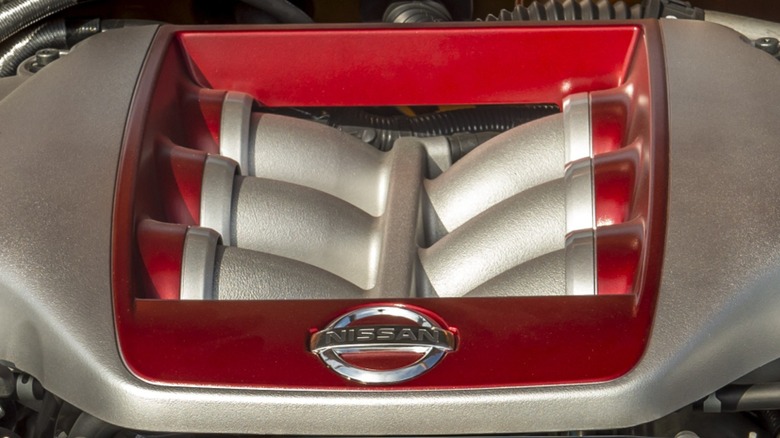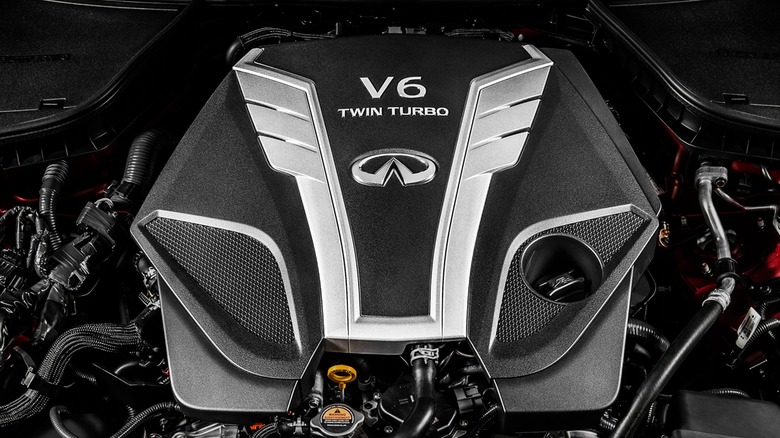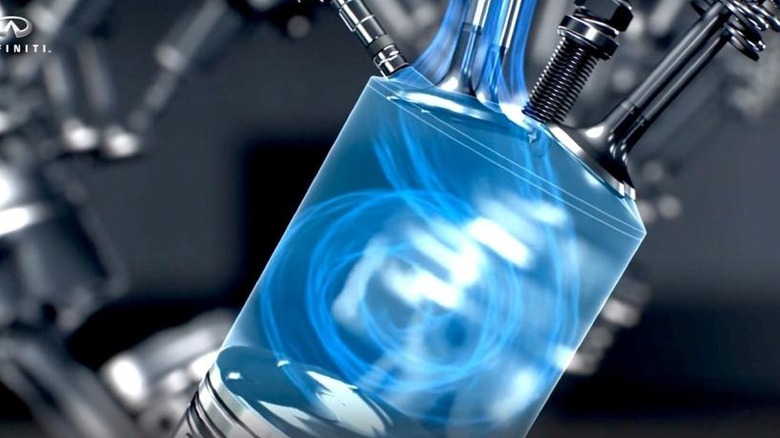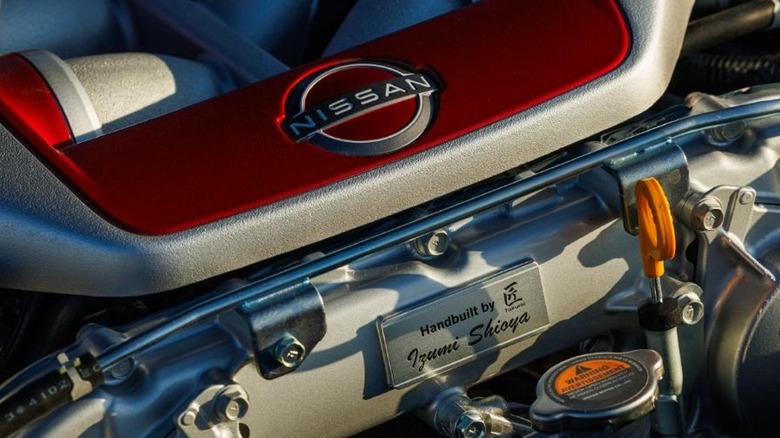VR30 Vs. VR38: What's The Difference Between These Nissan Engines?
The popular VQ engine family powered a number of Nissan models, including family sedans, sports cars, minivans, SUVs, and pickup trucks beginning in 1994. One of the cons of the early VQ engine was its less-than-stellar performance figures. However, later iterations made up to 300 horsepower while providing increased fuel economy and maintaining compliance with ever-increasing emission standards. Examples such as the VQ35HR were built on strong engine block castings able to endure extreme rpm levels.
Nissan built upon that success with its performance-oriented VR38DETT engine. The powerful twin-turbo V6 made its debut in the sporty Nissan R35 GT-R in 2007, although it took an additional two years to see it for sale stateside. Nissan expanded the list of VR38-powered vehicles in 2012 when it delivered the first Juke-R to a customer.
With twin-turbo technology becoming more mainstream, Nissan introduced the VR30DDTT engine in 2015 as an optional power plant for the 2016 Infiniti Q50 Red Sport 400 and upcoming Q60 models. The twin-turbo VR30 V6 eventually made it into the Nissan Z NISMO where it's fast enough to post 0-60-mph times as low as 4.2 seconds.
Displacement is the obvious difference between the VR30 and VR38
While both VR30 and VR38 Nissan engines feature all aluminum six-cylinder V configurations with sprayed cylinder bore linings and twin-turbo induction, the names give away a difference in displacement. The VR30 offers a 3.0-liter (183-cubic-inch) displacement whereas the VR38 displaces 3.8 liters (232 cubic inches).
The VR30DDTT V6 uses 86 mm (3.386-inch) diameter cylinders and a crankshaft stroke measuring the same 86 mm (3.386 inches). One unique VR30 feature is the integrated exhaust manifolds which allows placing the catalytic converter closer to the engine for quicker heating. This rapid heating reduces emissions during cold engine startup.
The VR38 V6 features plasma-sprayed cylinder walls bored to 95.5 mm (3.760 inches) in diameter with an 88.4 mm (3.480-inch) crankshaft stroke. The dual titanium exhaust funnels through four outlets, two for each cylinder bank. In addition to the differences in displacement and exhaust systems, the engines use different methods to deliver fuel to the cylinders.
What do the letters mean on Nissan VR30DDTT and VR38DETT engines?
Following the numbering discrepancy in the names of the VR30DDTT and VR38DETT giving away the displacement differences, the next obvious difference involves the letters. Since five of the six letters are the same and occupy the same positions, we'll get those similarities out of the way first.
The first two positions at the front of the names, occupied by the letters VR, identify the engine family to which they belong. It's a similar naming convention to Nissan's VQ family that ultimately gave rise to the VR engines here.
Following the numbers in both engine names is the letter D. That D indicates the use of dual overhead camshafts (DOHC) to activate the valvetrain of each V6. Both engines also use variable valve timing control (VTC) for increased performance and efficiency.
We'll skip the next letter for now and focus on the TT present in both engine names. You've probably already guessed that TT stands for the twin turbochargers Nissan fitted to both these VR engines.
The letter that stands out occupies the second position following the numbers, a D in the case of the VR30 and E for the VR38. This letter indicates a difference in the way each engine's fuel injection works. The VR30 uses direct fuel injection, indicated by the letter D, to squirt fuel directly into the combustion chamber for a precisely metered delivery. The VR38, with its E designation, uses electronic sequential multi-port fuel injection (MPI) which delivers fuel into the intake runners just before the intake valves.
Does the VR38 make more power than the VR30?
You might expect the extra 0.8-liter displacement of the VR38 to be more powerful than the smaller VR30. However, you should consider the VR30's use of direct fuel injection versus the VR38's MPI system, and that the VR30 has a compression ratio of 10.3:1 compared to the VR38's 9.0:1 ratio.
If you still think the larger VR38 engine has more horsepower, you're right, it does. However, the VR30DDTT still makes up to 400 horsepower and 350 lb-ft of torque in its most powerful configuration containing two turbocharger intercooler pumps and an optical turbo speed sensor. It's also used as a 300-horsepower version (minus one intercooler pump and the optical speed sensor) in some models producing 295 lb-ft of torque.
The VR38DETT provided in the 2024 Nissan GT-R produces 565 horsepower and 467 lb-ft of torque. The same engine with a few tweaks from the NISMO (shortened from Nissan Motorsports) team is rated at 600 horsepower and 481 lb-ft of torque.



